Sure, we get it. You live in North Dakota for a reason, and it’s not necessarily to `get ahead’ in life. You’re happy with the simple things, most likely. And boring to most Americans would be `fun’ to you.
So calling a place `the worst’ in North Dakota might not resonate as much as it does in other states. But we’re sure you’re curious, so we included you guys in our rankings. After all, the other 49 states we ranked all got tons of attention. You’re welcome!
Just like every other state, North Dakota has its least desirable spots. The purpose of this post is to use science and data to determine which places are the worst you could possibly live in if you make North Dakota your home.
After analyzing 24 of the state’s most populous cities (over 2,100 people), we came up with this list as the 10 worst places to live in the state of North Dakota:
Table Of Contents: Top Ten | Methodology | Summary | Table
Where are these places, you wonder? And before you get all riled up and say we’re picking on small towns in North Dakota, that’s not the case.
We understand there’s a lot of good in every place. For example, the best place to live in North Dakota is Carrington.
However, according to data (which doesn’t measure things like beauty and ‘friendly people’), the state has far better options for making a place home. And the worst place to live in North Dakota? The worst place to live in North Dakota is Casselton.
Read below to see how we crunched the numbers and how your city fared in 2024.
If you’re looking for something more national, check out the worst cities in America or the worst states in America.
For more North Dakota reading, check out:
- Best Places To Live In North Dakota
- Cheapest Places To Live In North Dakota
- Most Dangerous Cities In North Dakota
The 10 Worst Places To Live In North Dakota For 2024
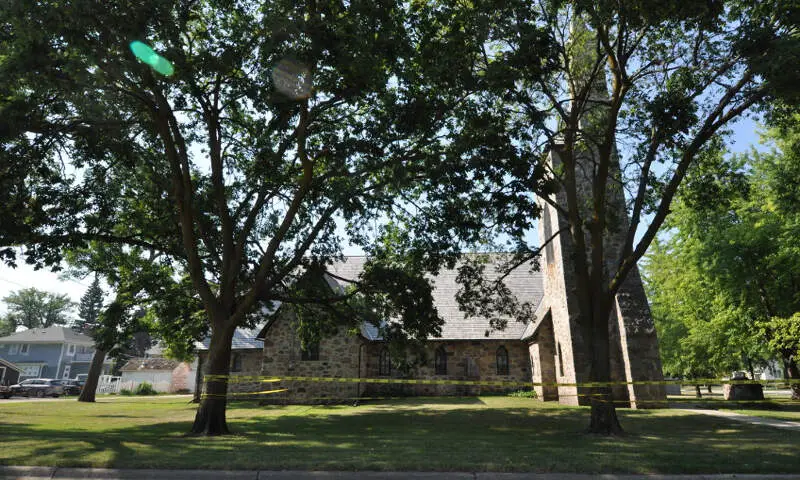
/10
Population: 2,496
Average Home Price: $280,193
Median Income: $61,861
Unemployment Rate: 1.4%
Crime Per Capita: 0.0478
More on Casselton: Data | Real Estate
Casselton was once the site as the world’s largest pile of empty oil cans. The castoffs from a local gas station were shaped into a 45-foot-tall tower in the 1930s. It lasted until the 21st century, but has since been taken down.
Having lost this landmark, the 2,496 residents of town can take solace in their strong economy. The unemployment rate sits at 1.4% and the median income hovers at $61,861. Overall, it ranks as the worst place to live in North Dakota for 2024.
With that financial base, why does the city end up on this list? Because of a demolished oil-can tower? Not exactly. Instead, the community suffers from a thin diversity and a lack of amenities.
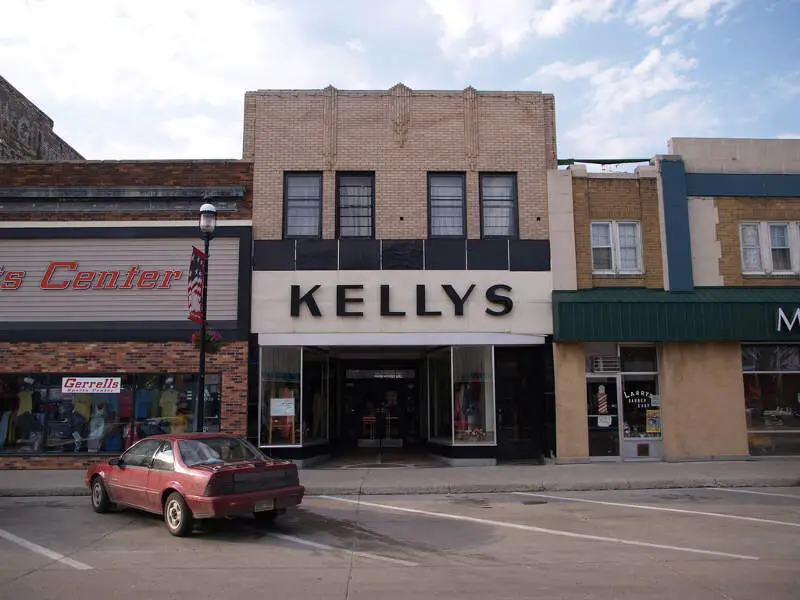
/10
Population: 7,192
Average Home Price: $215,052
Median Income: $41,203
Unemployment Rate: 1.1%
Crime Per Capita: 0.0456
More on Devils Lake: Data | Crime | Cost Of Living | Real Estate
Devils Lake is the largest city to make this list. It’s just across Devil’s Lake from a reservation in the northern half of the state.
There’s a lot of crime here. In fact, it’s the 2nd most dangerous place in North Dakota. You have a 1 in 22 chance of being the victim of a property crime when you’re within the city limits every year. That’s a lot of stolen Vikings (or Packers) jerseys, and a lot of missing slush burgers and bunny lunches.
/10
Population: 2,102
Average Home Price: $171,646
Median Income: $67,813
Unemployment Rate: 3.6%
Crime Per Capita: 0.0301
More on Mayville: Real Estate
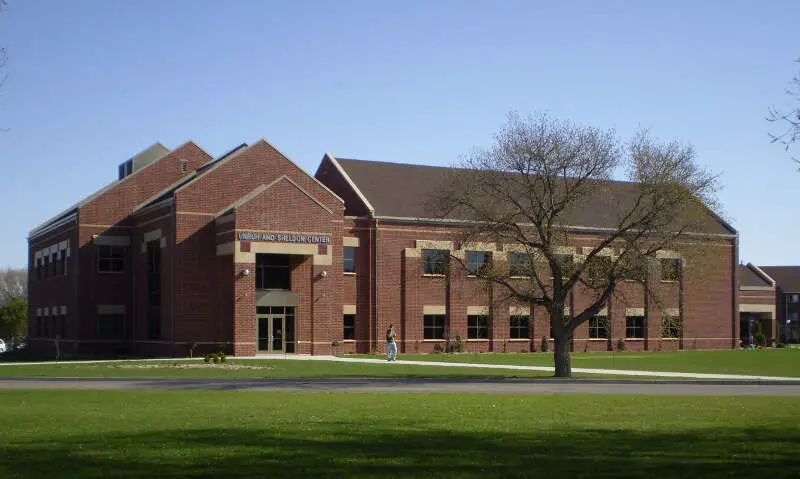
/10
Population: 15,850
Average Home Price: $184,873
Median Income: $53,389
Unemployment Rate: 5.7%
Crime Per Capita: 0.0230
More on Jamestown: Data | Crime | Cost Of Living | Real Estate
Take a ride through Jamestown and you’ll probably be struck by the giant statue of a bison standing outside the National Buffalo Museum. The image underlines the fact that the town of 15,850 people is surrounded by a sprawling prairie, where giant herds of buffalo once roamed.
This isolation hurts the community. Housing and diversity are below expectations. Meanwhile, local schools score just a 5/10 on Great Schools. Still, as one of the few population centers in the area (and one of the state’s biggest cities, if you can believe it), Jamestown’s economy remains reasonably strong. Its unemployment rate stands at 5.7% and its median income hovers at $53,389.
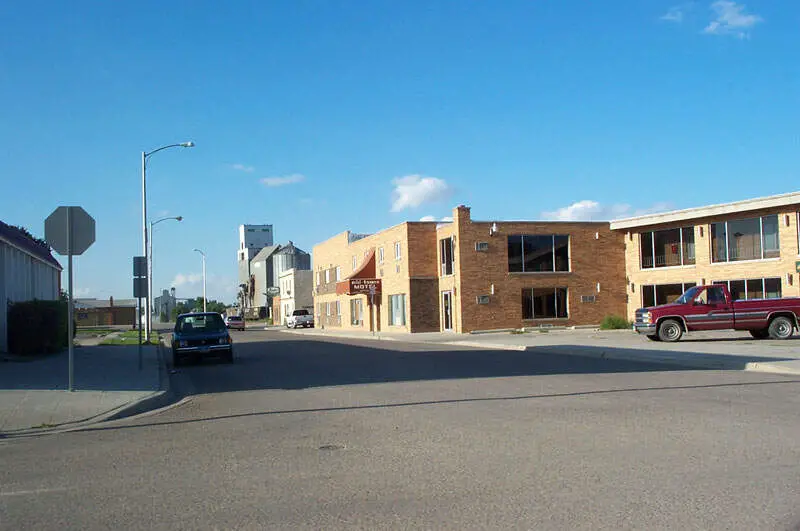
/10
Grafton ranks as the 5th worst place to live in North Dakota for 2024, let’s take a look at why.
Grafton lies in northeast part of the state, near the Minnesota state line and about an hour south of the Canadian border. Founded as a railroad town in the 19th century, the community lands on this list as a result of a weak housing situation and a substandard education system. The local high school scores a horrendous 1/10 on Great Schools.
As the principle population center in the area, Grafton acts as a regional hub. It serves as the county seat and offers significant amenities, including parks and golf courses. If you want a look at historic Grafton, you can check out Elmwood House, a Victorian mansion built in 1895.
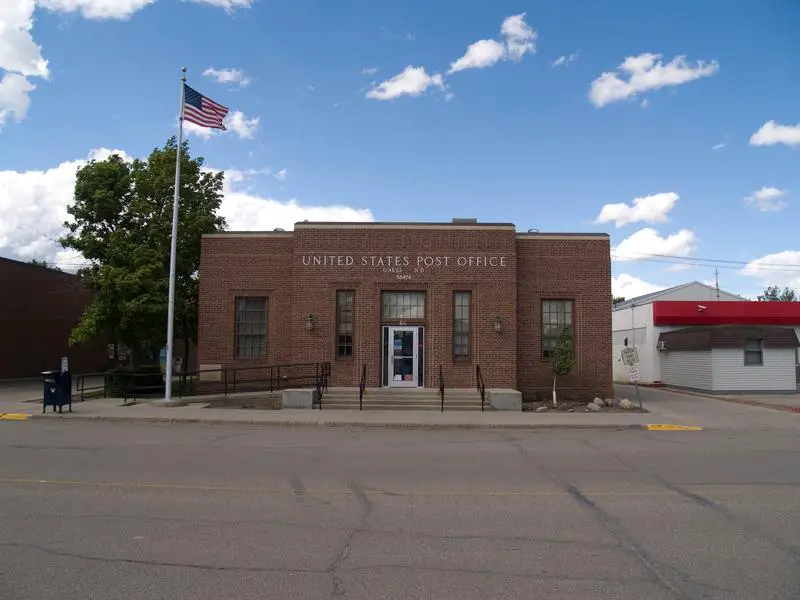
/10
Population: 2,125
Average Home Price: $135,535
Median Income: $64,931
Unemployment Rate: 4.0%
Crime Per Capita: 0.0024
More on Oakes: Real Estate

/10
Population: 127,319
Average Home Price: $290,476
Median Income: $64,432
Unemployment Rate: 3.6%
Crime Per Capita: 0.0478
More on Fargo: Data | Crime | Cost Of Living | Real Estate
With a population of 127,319, Fargo ranks as the largest city in North Dakota. This gives the community some advantages. The economy chugs along with a 3.6% unemployment rate and a $64,432 median income. You’ll also find plenty of activities, from the Plains Art Museum to the Fargo Air Museum.
However, as a big city (by North Dakota standards, anyway), Fargo has its share of problems. The median home price of $290,476 is out of the range of many locals, who earn a median income of $64,432. At the same time, the crime rate stands more than 40% above the national average.
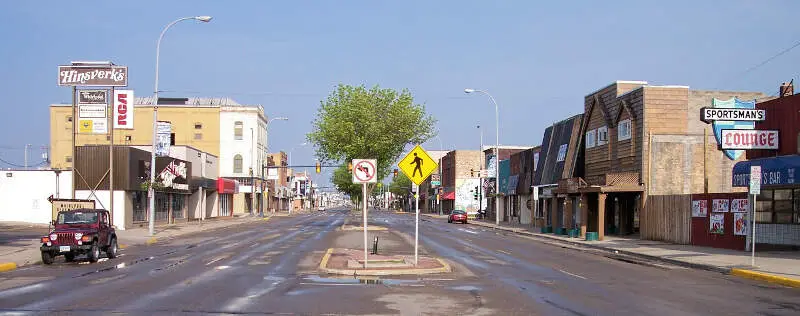
/10
Population: 7,983
Average Home Price: $201,883
Median Income: $51,417
Unemployment Rate: 2.8%
Crime Per Capita: 0.0247
More on Wahpeton: Data | Crime | Cost Of Living | Real Estate
Welcome to Wahpeton, home of the Wahpper! In case you don’t know, that’s a 40-foot long statue of a fish, known as the world’s largest catfish. When your town has that going for it, what could go wrong?
Plenty, as it turns out. The local economy is sluggish, with a poverty rate of 18.3%. At the same time, housing and education don’t meet expectations. Meanwhile, crime tracks at 20% above the national average.
Sitting near the Minnesota border on the eastern edge of the state, Wahpeton has more to offer than a giant fiberglass fish. You can also check out the Sheyenne National Grassland, located about 40 minutes away.
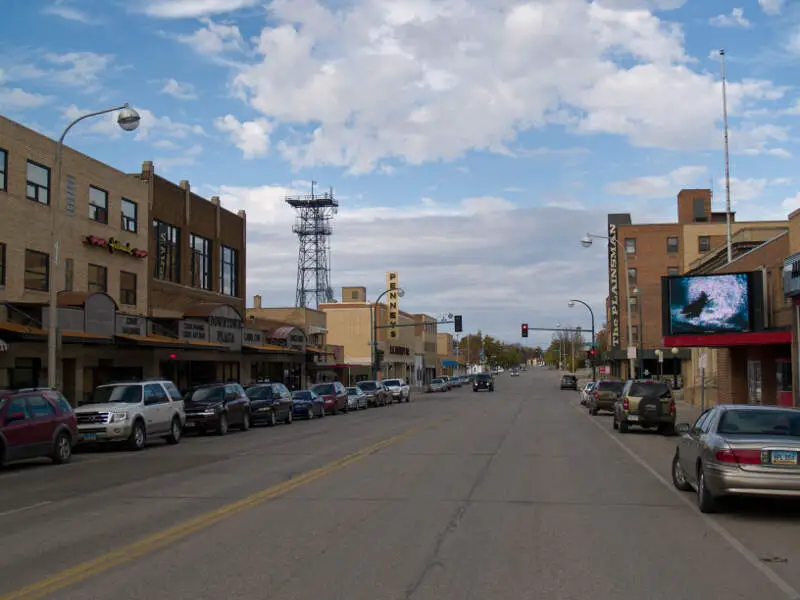
/10
Population: 27,783
Average Home Price: $317,700
Median Income: $80,352
Unemployment Rate: 2.9%
Crime Per Capita: 0.0243
More on Williston: Data | Crime | Cost Of Living | Real Estate
Williston has seen a major surge in population in recent decades, sparked largely by a local oil boom. The number of residents has swelled from less than 13,000 in the 2000 census to a mark of 27,783 today.
That expansion has come with its share of problems. Sure, the oil industry keeps the economy humming, leading to a 2.9% unemployment rate and a $80,352 median income. But this has led to other problems. Specifically, Williston has experienced something of a crime wave, with a rate now more than 25% above the national average.
Besides its strong financial base, Williston offers excellent outdoor activities.
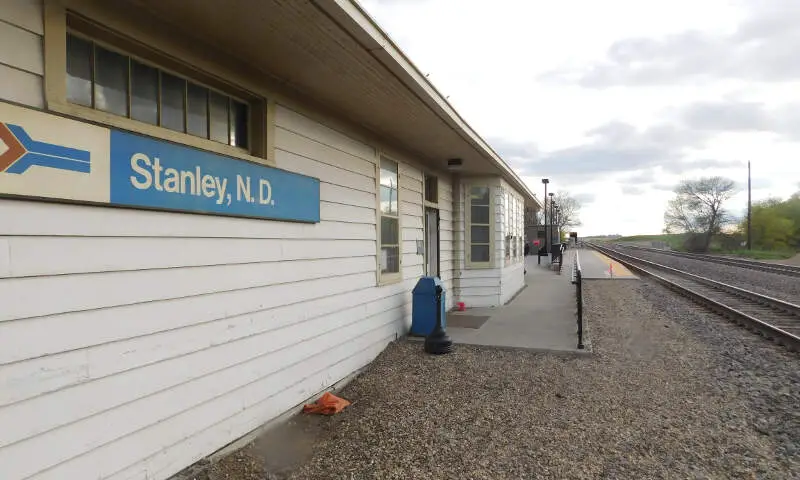
Methodology: How we determined the worst places to live in North Dakota for 2024
To figure out the worst places to live in North Dakota, we used Saturday Night Science to idenift what kinds of things people like and then decide what cities have the least amount of those things.
We don’t think it’s a stretch to assume that people like the following things:
- Good education
- Lots of jobs
- Low crime
- Low poverty
- Nice homes
- High incomes
- High population density (Lots of things to do)
- Short work commutes
- Health insurance
The data comes from the Census’s most recent American Community Survey and the FBI Uniform Crime Report.
We broke crime down into violent crime and property crime to give violent crime a more significant weight. If you did a simple calculation of all crimes per capita, property crimes are typically 7x more common and bias that ranking.
Furthermore, only cities with at least 2,000 people were considered — leaving 24 cities.
We then ranked each city from 1 to 24 for all the criteria, with a #1 ranking being the worst for the particular criteria.
Next, we averaged the rankings into one “Worst Place To Live Score.”
Finally, we ranked every city on the “Worst Place To Live Score,” with the lowest score being the worst city in North Dakota — Casselton. Read on for a detailed look at the ten worst cities in North Dakota. This article is an opinion based on facts meant as infotainment. We updated this article for 2024. This list is our tenth time ranking the worst places to live in North Dakota.
Summary: Wrapping Up The Worst In North Dakota
If you’re looking at areas in North Dakota with the worst economic situations, where there’s higher than average crime and little to do, this is an accurate list.
And in the end, Casselton ranks as the worst city to live in North Dakota for 2024.
The worst cities in North Dakota are .
If you’re curious enough, here are the best cities to live in North Dakota:
- West Fargo (Pop. 38,653)
- Lincoln (Pop. 4,209)
- Carrington (Pop. 2,161)
For more North Dakota reading, check out:
- Richest Cities In North Dakota
- Safest Places In North Dakota
- Best Cities For Singles In North Dakota
Worst Places To Live In North Dakota
| Rank | City | Population | Unemployment Rate | Home Price | Median Income | Crime Per Capita |
|---|---|---|---|---|---|---|
| 1 | Casselton | 2,496 | 1.4% | $280,193 | $61,861 | 0.0478 |
| 2 | Devils Lake | 7,192 | 1.1% | $215,052 | $41,203 | 0.0456 |
| 3 | Mayville | 2,102 | 3.6% | $171,646 | $67,813 | 0.0301 |
| 4 | Jamestown | 15,850 | 5.7% | $184,873 | $53,389 | 0.0230 |
| 5 | Grafton | 4,161 | 3.3% | $126,820 | $59,696 | 0.0151 |
| 6 | Oakes | 2,125 | 4.0% | $135,535 | $64,931 | 0.0024 |
| 7 | Fargo | 127,319 | 3.6% | $290,476 | $64,432 | 0.0478 |
| 8 | Wahpeton | 7,983 | 2.8% | $201,883 | $51,417 | 0.0247 |
| 9 | Williston | 27,783 | 2.9% | $317,700 | $80,352 | 0.0243 |
| 10 | Stanley | 2,189 | 3.3% | $222,891 | $101,351 | 0.0032 |
| 11 | Dickinson | 25,116 | 3.0% | $275,335 | $75,767 | 0.0194 |
| 12 | Horace | 3,464 | 0.6% | $397,324 | $146,184 | 0.0478 |
| 13 | Lisbon | 2,159 | 4.5% | $151,840 | $61,250 | 0.0060 |
| 14 | Bottineau | 2,104 | 6.7% | $218,355 | $67,723 | 0.0301 |
| 15 | Minot | 48,038 | 3.7% | $239,901 | $75,545 | 0.0132 |
| 16 | Mandan | 24,049 | 2.0% | $308,053 | $78,077 | 0.0381 |
| 17 | Grand Forks | 58,935 | 3.7% | $253,634 | $59,079 | 0.0326 |
| 18 | Beulah | 3,063 | 0.6% | $197,523 | $90,655 | 0.0098 |
| 19 | Hazen | 2,569 | 4.1% | $180,243 | $79,231 | 0.0012 |
| 20 | Bismarck | 73,694 | 3.1% | $339,338 | $76,014 | 0.0372 |
| 21 | Rugby | 2,654 | 0.6% | $166,273 | $54,852 | 0.0098 |
| 22 | West Fargo | 38,653 | 0.8% | $317,108 | $96,929 | 0.0152 |
| 23 | Lincoln | 4,209 | 2.5% | $270,030 | $83,947 | 0.0069 |
| 24 | Carrington | 2,161 | 0.0% | $164,183 | $62,240 | 0.0028 |

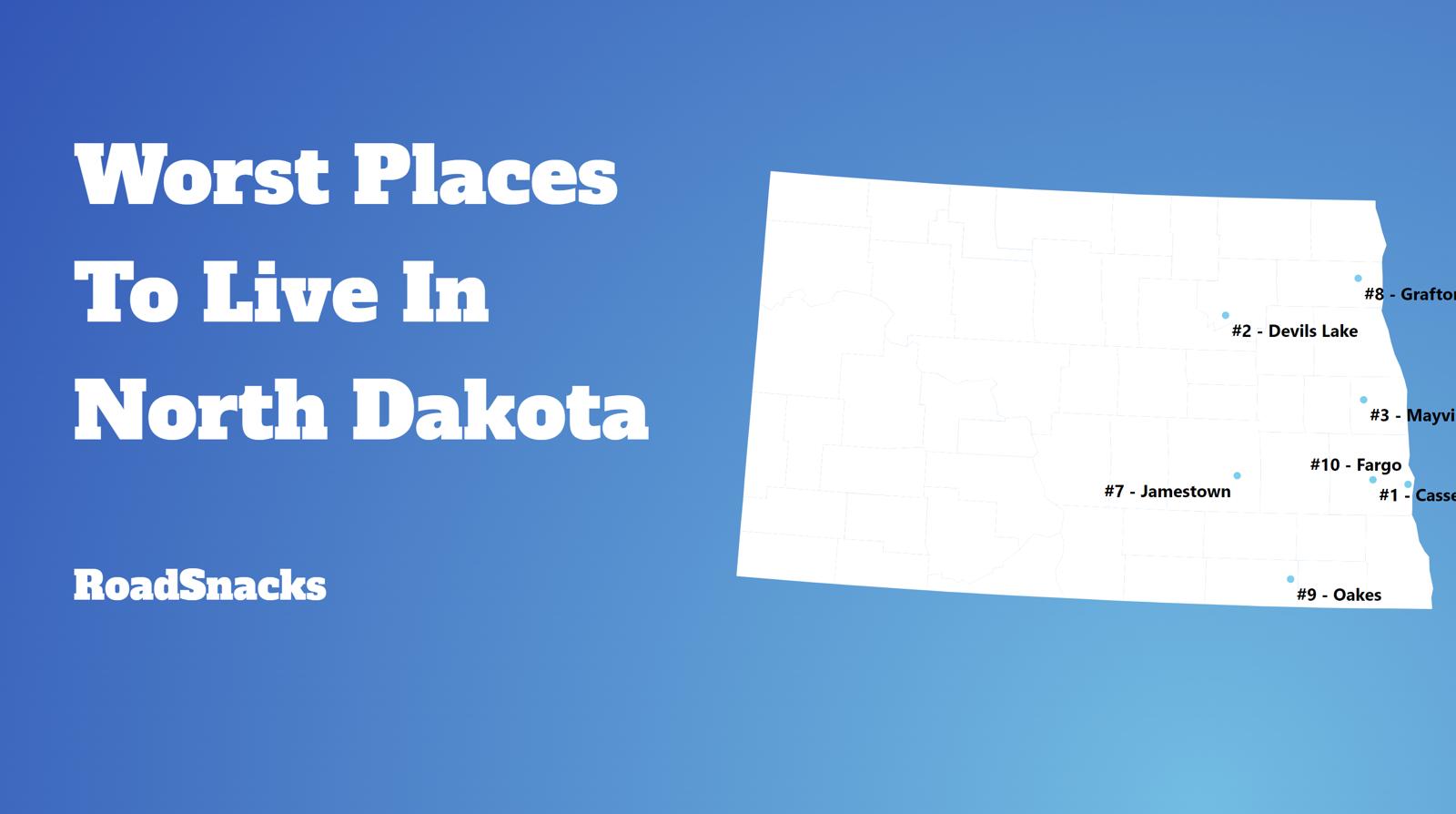
Currently live in Bismarck. I could only live here or Fargo/West Fargo in this state. I love ND though, and it truly is the best state in the country
There have been many horror stories coming out of Williston in recent years, some I’ve heard direct from people I know there, so it can’t possibly be in the top 10 unless you’re allowing average income to trump other factors (read: oil money, oil problems). Also, while Mayville is not an exciting place, it’s hard to imagine it belongs in the bottom 10.
Very small minded not to include the tribes, and no I can’t imagine enlighten me
The worst place is any place you do not want to live but are forced to by a backwards legal and social system that is run by those with the most money.
Pretty sure Williston is not on the best places list. What about Dickinson or Bismarck or Mandan? Lincoln being at the top of your list? :/ Your best list sucks. And your worst list? There are definitely worse that I could just rattle off the top of my head. You should get an honest ND opinion and not some outdated facts.
This is a note to the publisher of this article. I think you need to read up more on the other towns in North Dakota, before you make a ridiculous article like this! The places that you listed were the best places are the worst ones in this state!
I live in California now but from Mayville. I am so glad I grew up there.The college and school system in Mayville was outstanding then and now. The park the hockey arena and sports in the area are great assets to the community. We even have a radio station that wasn’t mentioned. I don’t know what you’re smoking but Mayville should be on best places to live. Would like to move back when I retire. Wonderful people my home town. Proud of it.
Was this a joke. It is written with the accuracy of a book review written from the flap on the paper cover. If I was the editor or producer I would seriously check out this author as I believe he never left his/her 450 square foot loft in New York for fear of a crime and simply looked to find the which towns had the least amount of data on the web. Take Grafton, did they note the number of championships they have won in the past 10 years. Probably, 2nd to none in the nation. I am telling you, check this idiot out, they have pulled the wool over your eyes. Time to wake up and get some new blood working for you.
“Population Density (The lower the worse – meaning there’s less to do for indoor entertainment)”
Your statistics may be accurate but your interpretation of data and the word “worst” is very subjective, faulty and is your opinion. 3 out of 5 places you listed as the best places to live in the state are cities most North Dakotans will ever want to live in.
Many also pointed out to you that Shell Valley is not even a city.
Articles like these are misleading and populating the internet. They are a source of confusion and misinterpretation because they are presented as written by an authority.
There are two acceptable forms of journalism- truthful and satire. This article is not even the latter.
lol, this might be the dumbest shit I’ve read in a long time.
Shame on Wdaz for giving light to such a foolish website.
Which ever town will let me pull in my 1971 trailer house and my portapotty is a good place to live.
Umm Those towns are great. Earn around 30000 a year and buy a home for under 40000. I lived there and moved to Utah where 25000 is the average without a degree, and homes start at 200000 and rent is 1000 a month. Less people, cheaper, better. Get it right.
What a ridiculous article